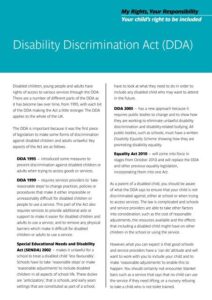What is the Disability Discrimination Act 2010?
Disability Discrimination Act 2010
If you’re wondering what is the Disability Discrimination Act 2010, read on! The act protects disabled people from being discriminated against because of their condition. It covers many conditions, including learning difficulties, autism, and dyslexia. The Equality Act 2010 defines a disability as “an impairment that significantly limits a person’s ability to do any substantial activity.” It covers certain kinds of disabilities, such as those that progress over time.
First of all, what is a disability? This law protects disabled people and their carers from discrimination and harassment. It defines a disability, so if you match this definition, you could be protected from discrimination. It also covers harassment, victimisation, and harassment. The act does not cover the stigma that often comes with disabilities, so make sure you follow the rules. The Equality Act 2010 will help you protect yourself and your loved ones.
Lastly, discrimination is when a person is treated unfairly because of their disability. This can happen in a number of ways. There is perceived discrimination, associated discrimination, and harassment. The latter can be offensive, humiliating, and even illegal. There are many other types of discrimination that fall under the umbrella of disability. You should understand your rights before you decide to pursue a case. It’s worth your while to get a copy of the Act and find out more.
There’s also the issue of private organisations working for public bodies. A day care centre for the local council can fall under the Act’s umbrella. Such a public body is expected to promote good relations with people with disabilities and encourage them to participate in activities. Whether the organisation is government, private, or non-profit, it must take steps to educate people about disabilities. The aim is to make life easier for everyone.

What is the Disability Discrimination Act 2010?
There are many ways to apply the Equality Act to prevent disability discrimination. For example, the Equality Act covers discrimination against employees and applicants. Disabled people are protected during the application process, during the employment process, and after the employment ends. Ultimately, it’s a great way to fight discrimination and ensure you get the best possible treatment. If you want to get started on your own case, consider the Equality Act to start.
The Act also protects disabled people from employers who require applicants to undergo medical examinations. However, employers must notify candidates about their condition before making any such decisions. If employers want to avoid discrimination, they must take the steps necessary to provide a better experience for disabled people. You should always be open and honest about your disability with the employer, describing your condition, and suggesting ways to overcome any barriers you may have.
One of the most common forms of disability discrimination is not making reasonable adjustments. To qualify for this type of discrimination, you must show that your disability has negatively impacted your ability to perform the job. It is important to note that the act is a legal battle, and you must have a strong case to win. You can win by pointing out your disability and demanding changes. It is worth the effort to learn about the Equality Act 2010 and get started on your own case today!